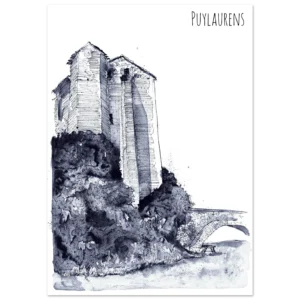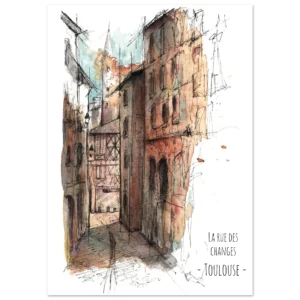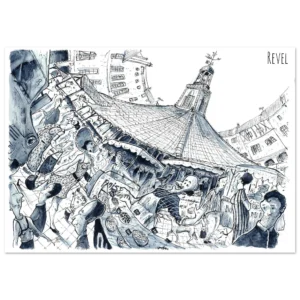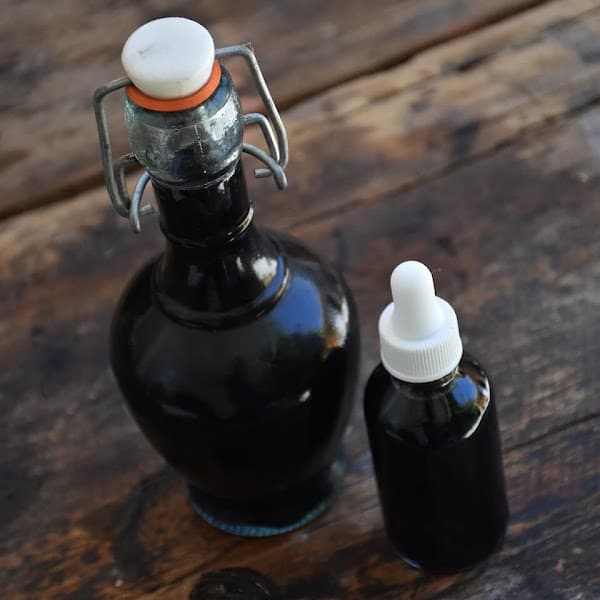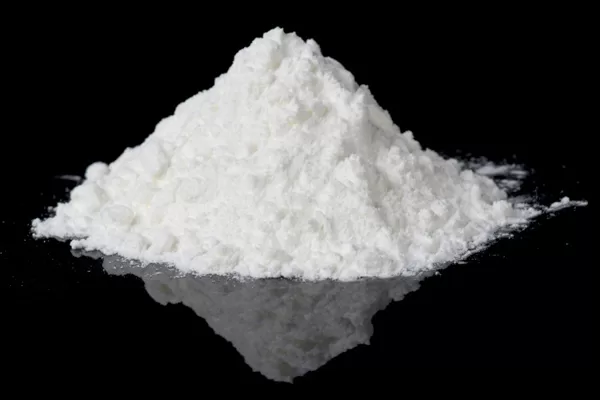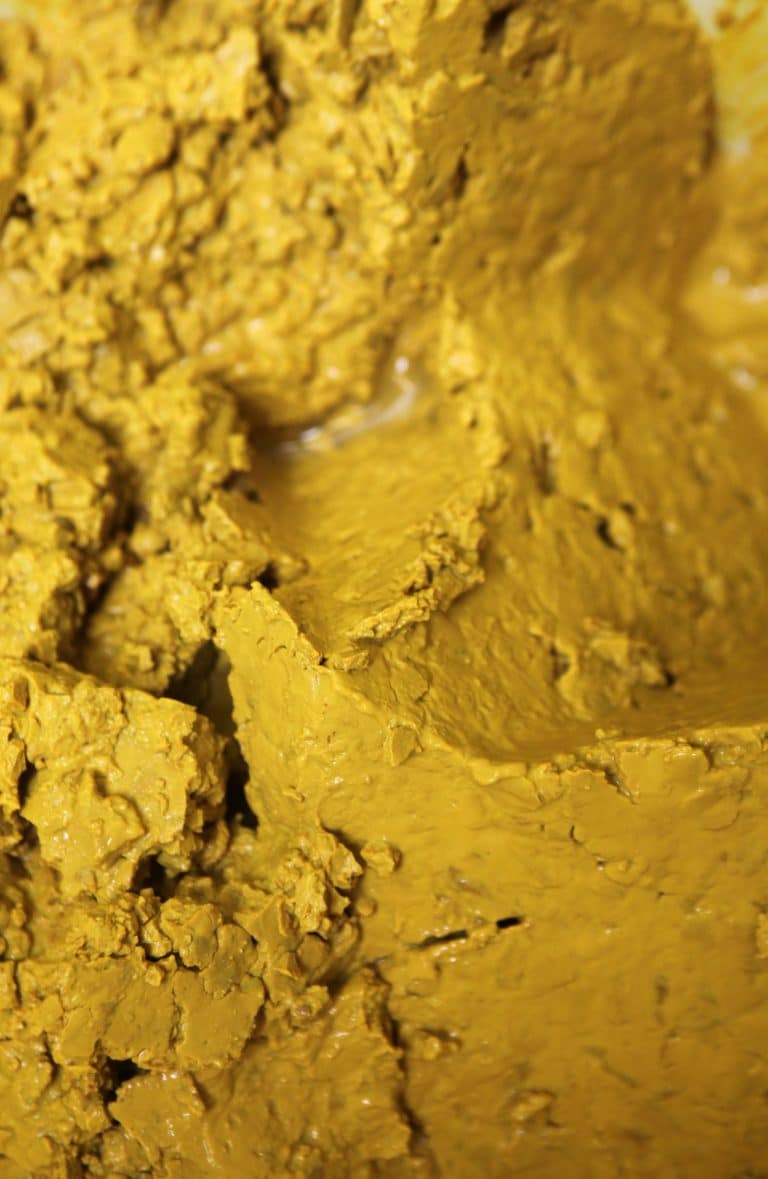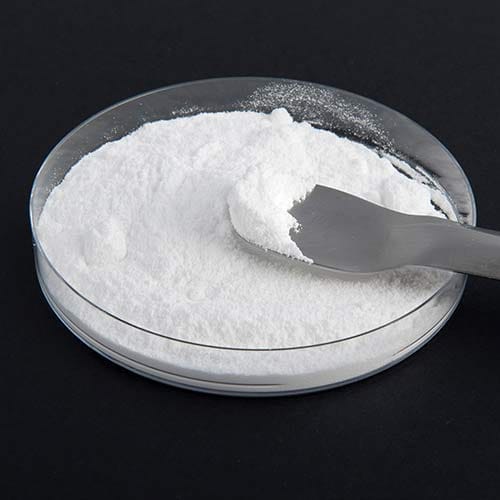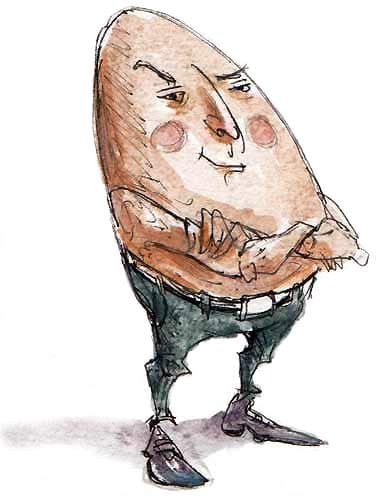Obtaining blue pigments from the indigo plant
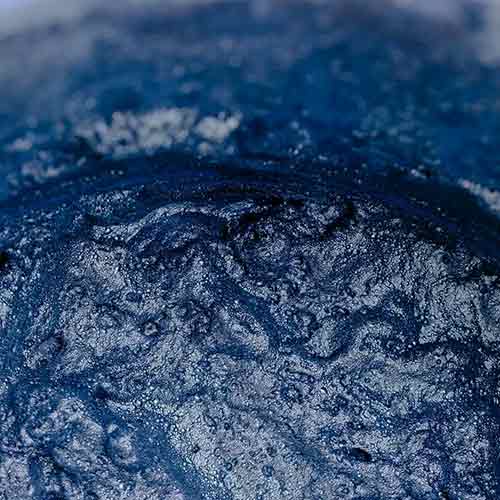
What is indigo?
The name "indigo" refers to an organic substance extracted from indigo plants which, after various chemical manipulations, produces the famous "indigo" blue.
Indigo plants don't naturally possess a blue dye or pigment as such, but rather precursors known as indican or isatan B and isantan B. Once these precursors have been obtained, they need to be transformed to obtain the famous pigment.
There are around a hundred indigo shrubs and plants, but only ten or so are really useful for extracting the pigments.
Indigo in history
Before chemists, particularly those of the 19ᵉ century, got to grips with the manufacture of blue, this color was rare in its natural state. Although mineral pigments such as lapis lazuli were already known, they were difficult to obtain and were mainly located in a few restricted regions of the planet, mainly in Afghanistan, making it a rare and extremely expensive pigment. It was therefore mainly thanks to mastery of the extraction of dyes from indigo plants that we were able to obtain this color.
The first traces of indigo cultivation date back to around 4,000 BC in India. The Mesopotamians and Egyptians of ancient Egypt also mastered the cultivation of this plant, as traces have been discovered dating back to around 2,500 BC. Indigo's first appearance in print dates back to 77 A.D., in the book "De materia medica" by the Greek physician, pharmacologist and botanist Dioscorides. The Mayans of pre-Columbian America used indigo by mixing it with palygorskite clay to obtain a blue close to primary blue, called "Mayan blue".
In Europe, it was another indigo plant that made the fortunes of many traders, particularly in and around Toulouse: Isatis Tinctoria, better known as Pastel des teinturiers. Initially, this plant was not classified in the indigo family, but research has shown that its components are the same as those found in other plants in this family.
On their arrival in Asia in the 16th century, the Portuguese discovered that indigo was also present, and that it was sold on the markets in powder form.

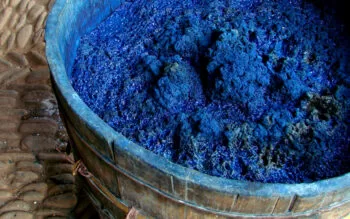
Characteristics of indigo pigments:
- To obtain pigments from indigo plants, it is first necessary to extract what are known as precursors. Only then, after a few manipulations, are the precious pigments obtained.
- Alum is not needed to transform the dye into pigment, unlike gaude or madder, for example.
- The resulting pigments are particularly resistant to UV rays and other outdoor weathering.
The main indigo plants:
Of the dozen or so plants/shrubs that can be used to extract indigo pigment, three in particular stand out:

Indigofera tinctoria
Undoubtedly the most famous of the indigo plants, it is also known as the dyers' indigo. Native to India, it is reputed to produce the greatest quantity of indigo.
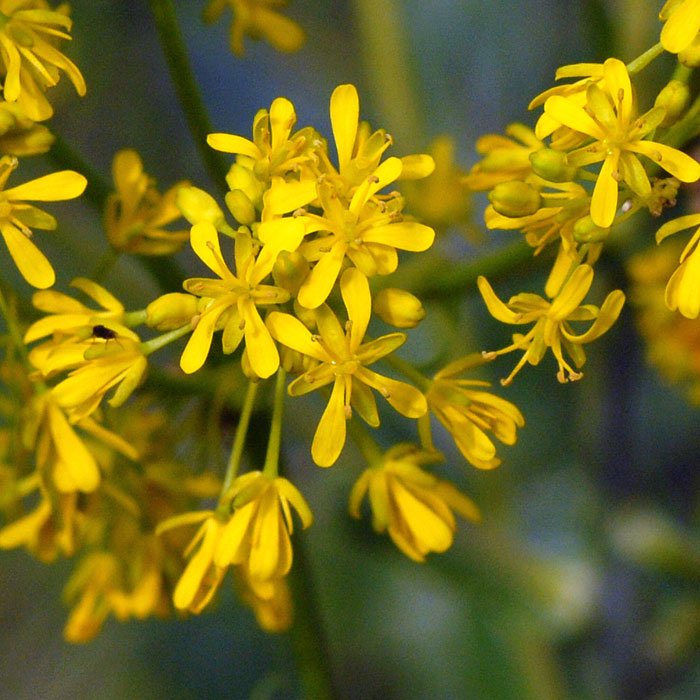
Isatis tinctoria
Known as Pastel des teinturiers, this plant made the fortune of certain Lauragais merchants. Its color was exported throughout Europe before the massive importation of indigo from India and the Americas.

Persicaria tinctoria
Also known as dyer's knotweed, it is native to eastern Asia. Unlike its sister, indigofera tinctoria, this plant has acclimatized very well to Europe's harsher climate.
Recipe
Minimum: 1h30
Easy
Cheap
Ingredients
- 200 g indigo leaf powder
- 60 g blanc de meudon or soda crystals.
- Liquid beef gall (optional)
- Citric acid.
Utensils

1 cutter
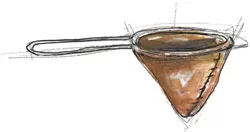
1 fabric filter
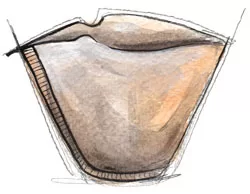
Coffee filters

1 polystirene plate
Larger than the container opening!

1 thumbwheel
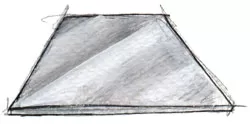
1 glass plate

1 pencil

1 stainless steel or plastic spatula
Avoid iron and oxidized tools.

2 containers
Minimum 3 Litres

1 empty water can
it must be over 2 liters
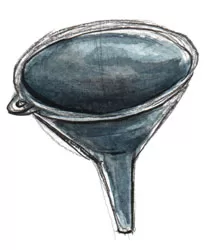
1 funnel

1 plate

1 pissette
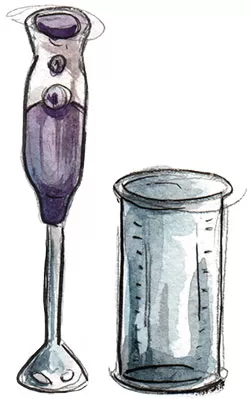
1 mixer
Manufacturing the floating cover
This lid limits air contact with the preparation, reducing the risk of rapid oxidation.
Step 1
Place the container upside down on the polystyrene board and draw the outline with a pencil.
Step 2
Redraw a circle inside the original one, reducing the diameter by about 0.5 cm.
Step 3
Cut out the smallest circle with a cutter.
Step 4
Check that the circle fits into the upper part of the container without too much space between the edges.
Step 5
If the lid doesn't fit into the top of the container, use the cutter to reduce its size a little further.
Step 6
Your floating lid is ready.
Preparation
Step 1
Pour 2 L of lukewarm water (approx. 45°C) into the container and add 200 g of indigo leaf powder.
Step 2
Add three drops of ox gall (a wetting agent) to help the indigo leaves absorb water.
Beef gall is not compulsory, but it makes the job much easier.
Stir with a whisk until all the leaves are wet.
Step 3
Place the "floating lid" over the preparation.
At this stage, it is important to limit air contact with the preparation.
Step 4
Leave to infuse for at least an hour.
Step 5
Pour the mixture into the other container, straining through a cloth filter to separate the liquid from the leaves.
The result is a slightly yellow/green solution.
Step 6
Add about 60 g of blanc de Meudon or soda crystals to the solution.
Step 7
Blend with a mixer or whisk for about 3 minutes.
The aim of this step is to incorporate air into the previous preparation, which should foam and turn blue.
Step 8
Leave to stand for 5 minutes.
Step 9
Place the funnel with the coffee filter inside the mouth of an empty water can, and slowly pour in the brew.
You need to take your time and wait for the brew to run out of the coffee filter to avoid overflowing.
A blue paste will settle at the bottom of the filter, the future indigo pigments.
Step 10
Add 1 heaping tablespoon of citric acid and very hot water to the pissette.
Stir the pissette.
Clean the walls of the coffee filter with the spray from the drip tray.
We must insist!
If you don't have a pissette, take a small water bottle, punch a hole in the center of the cap, then fill the bottle with the mixture of water and citric acid. Then simply squeeze the bottle to release the liquid.
Step 11
Open the paper filter by gently tearing off the glued part, leaving the paste on the filter.
Step 12
Use the spatula to slide all the dough onto the plate.
Spread as much as possible on the plate.
Step 13
Leave to dry until all the water has evaporated.
This step can be accelerated by microwaving the dough.
To avoid burning the pigment, you need to work in gradually. Turn your microwave up to maximum power and run for 2 minutes.
Check that the pigment doesn't burn and restart the microwave. Continue until all the water has evaporated.
Step 14
Your pigments are almost ready. All you have to do is grind them finely on a glass (or marble) plate, then store them in an airtight jar.
You can then use them to make your own paints, pastels, chalk, etc.
Share
And also :
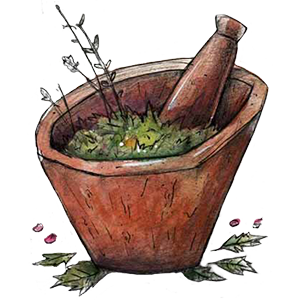
Courses and workshops
During the year, I organize various workshops and courses to learn how to make your own paints.

Resources
I've collected websites, books and PDFs dedicated to making paints, stains, inks and other artistic materials.

Store
I'm selling some of my creations.
Newsletter
If you sign up, you won't receive any spam from me, just one or two newsletters a month, no more.
- HOME
- ABOUT US
- MY WORKS
- MAKE YOUR OWN PAINTS
- How to make watercolours?
- How to make charcoal easily?
- How to make natural pigments easily?
- How to make dry pastels?
- How do I easily re-tension a canvas?
- How do I make black ink for calligraphy?
- Making lye with wood ash
- Making flour paint
- Making blue pigments with indigo
- Recipe for iron acetate (nail soup)
- Make soda crystals with baking soda.
- Madder lacquer recipe
- Gaude lacquer recipe
- Making gouache
- How to make walnut stain easily?
- How do I make calcium carbonate at home?
- How to make egg paint?
- WORKSHOPS / COURSES
- RESOURCES
- FORUM
- THE SHOP
- CONTACT

